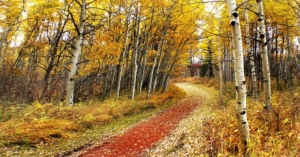How Urban Trees Can Save Lives
How Urban Trees Can Save Lives
Excess carbon in the atmosphere amplifies the greenhouse effect and planting trees helps mitigate that impact because trees sequester carbon. But in urban areas, planting trees could provide even more localized benefits. A new study published by The Nature Conservancy suggests that if more trees were planted in larger cities, then residents in those cities could benefit from cooler temperatures and reduced air pollution.
Trees cool the area around them by providing shade. Additionally, they use some of the sun’s warm energy during photosynthesis, effectively absorbing it from the atmosphere. Studies show that the combined efforts of these two factors can cool the surrounding local climate, resulting in cooler temperatures. Trees also act as natural filters that eliminate certain particulates and pollutants, effectively cleaning the air.
According to The Nature Conservancy study, cities with a low cost of planting trees, high levels of pollution and heat, and high population density would be expected to see the highest return on their investment. The study suggests that if $3.2 billion were invested among 245 of the world’s most populated cities, then up to 36,000 lives could be saved every year. Moreover, it’s estimated that an investment of this size could provide 77 million people with relief on the hottest days of the year by reducing temperatures and 68 million people would benefit from reductions in particulate matter pollution. This could save up to 48 billion kilowatt-hours of electricity for air conditioning and prevent up to 13 million tons of carbon dioxide from entering the atmosphere.
Choosing City Trees
Perhaps the number of trees planted in cities isn’t the only factor that should be considered. Urban developers often select trees to plant primarily for aesthetic purposes. However, one group of scientists think the focus should shift from aesthetics to biodiversity. In a new study published in the Journal of Landscape and Urban Planning, Dr. Juliane Vogt observes that city planners frequently use between 10 to 15 different species of trees to plant in a city and suggests that that’s not enough to support biodiversity.
For many species of life, the habitat of urban life presents them with an opportunity for new beginnings. The benefit, then, of having more biodiversity of trees in cities is that it could support the survival and evolution of other animals in cities that otherwise couldn’t survive. Perhaps the benefits of planting more trees in densely populated, polluted urban areas could be expanded if a greater variety of tree species were also considered. Moreover, the planting of a wide variety of trees would make urban areas less susceptible to widespread loss in the event of an insect or pathogen attack.
To search where tree planting can reduce heat in your city, visit the Planting Healthy Air Report below.
Resources
- Urban Trees Can Save Tens of Thousands of Lives Globally by Reducing Air Pollution and Temperature
- Planting Healthy Air Report
- How Planting Trees in Cities Can Save Thousands of Lives
- Database helps plant ‘right tree for the right place’
- Citree: A database supporting tree selection for urban areas in temperate climate












